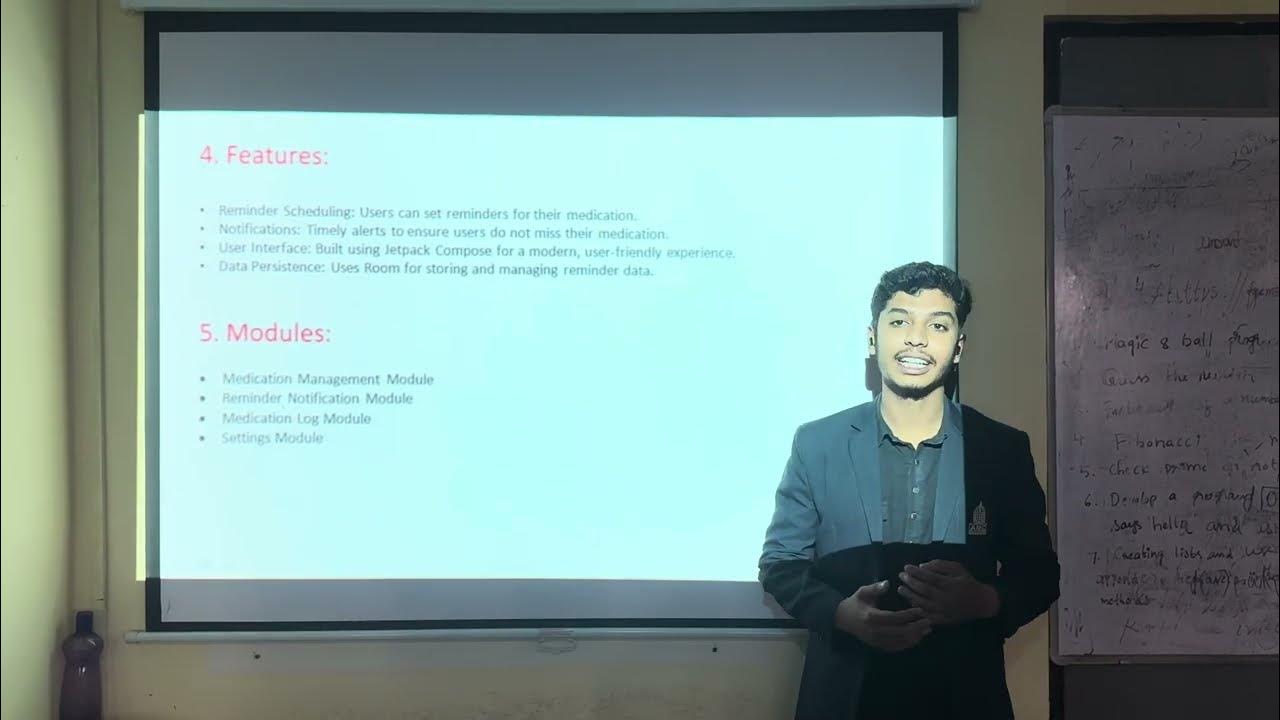Back End Developer Roadmap 2024
Summary
TLDRThe video introduces the core technologies required for backend development, emphasizing the importance of understanding server-side logic, database management, API development, server management, and security. It outlines a learning path starting with computer science fundamentals and progressing through languages like Python, Java, and JavaScript, to tools like Git and databases such as MySQL and MongoDB. The necessity of continuous learning and community engagement for success in backend development is highlighted.
Takeaways
- 👨💻 Backend development involves creating the underlying logic and server-side software for websites and applications.
- 🎯 Key responsibilities of backend developers include server-side logic, database management, API development, server management, and security.
- 📚 The learning journey for backend developers starts with a strong foundation in computer science and mastering server-side programming languages like Python, Java, and JavaScript.
- 🔍 Understanding databases like SQL, MySQL, PostgreSQL, and MongoDB is crucial for backend developers to manage and manipulate data effectively.
- 🌐 Familiarity with server management, cloud services, and containerization technologies is increasingly important for modern backend development.
- 🔧 Backend developers should be proficient in using version control systems like Git and collaboration platforms like GitHub.
- 📊 Knowledge of relational databases and APIs is vital for efficient data management and communication between software systems.
- 🛡️ Security is a paramount concern, requiring backend developers to implement authentication, authorization, data encryption, and conduct regular security audits.
- 🔍 Testing methodologies such as unit, integration, and end-to-end testing are essential to ensure the reliability and functionality of backend code.
- 🌟 Staying updated with the latest technological trends and engaging with the developer community is crucial for success in backend development.
Q & A
What is the primary responsibility of a backend developer?
-A backend developer focuses on creating the underlying logic and server-side software that powers websites and applications. This includes handling server-side logic, processing user requests, interacting with databases, and managing the flow of data between the server and the front end.
What are some key technologies a backend developer should learn?
-A backend developer should learn server-side programming languages like Python, Java, JavaScript, Node.js, and .NET, database management systems such as SQL, MySQL, PostgreSQL, or MongoDB, and become familiar with server management, cloud services, and containerization technologies.
How does continuous learning and staying updated with technological trends benefit a backend developer?
-Continuous learning and staying updated with the latest technological trends are crucial for a backend developer to remain competitive, adapt to new tools and frameworks, and successfully develop powerful, efficient, and secure backend systems.
What is the role of APIs in backend development?
-APIs (Application Programming Interfaces) are crucial for backend development as they allow different software applications to communicate with each other. They enable front-end applications to access server-side functions and data.
Why is security a key concern for backend developers?
-Security is a key concern for backend developers because it involves protecting the web application against various cyber threats, securing data, and implementing authentication and authorization schemes to safeguard sensitive information and prevent unauthorized access.
How do message brokers like RabbitMQ and Kafka contribute to backend systems?
-Message brokers facilitate communication between different parts of an application through a reliable, asynchronous messaging system. They are essential for building distributed systems, enabling decoupling of application components, enhancing scalability, and improving fault tolerance.
What is the significance of understanding caching in backend development?
-Caching is a technique that stores copies of data in a temporary storage area to reduce the load on the backend system, decrease latency, and improve the performance of web applications. Backend developers need to understand where and how to implement caching strategies effectively.
How does Docker contribute to the backend development process?
-Docker packages applications into containers, which allows for the creation, deployment, and management of applications in an isolated, consistent, and scalable environment. This is crucial for modern backend development practices.
What is the role of databases in backend development?
-Databases play a vital role in backend development as they store and manage the data for applications. Backend developers are responsible for designing, implementing, and maintaining databases, ensuring data integrity, security, and efficient data management.
Why is it important for backend developers to understand the basics of the internet?
-Understanding the basics of the internet, such as how data is transmitted, how DNS works, and the roles of protocols like HTTP and HTTPS, is crucial for backend developers. It allows them to build more efficient and secure applications by having a solid grasp of these foundational concepts.
How does the use of version control systems like Git benefit backend developers?
-Version control systems like Git allow developers to track and manage changes to their codebase. This is essential for maintaining code integrity, collaborating effectively with others, and managing different versions of the application.
Outlines

This section is available to paid users only. Please upgrade to access this part.
Upgrade NowMindmap

This section is available to paid users only. Please upgrade to access this part.
Upgrade NowKeywords

This section is available to paid users only. Please upgrade to access this part.
Upgrade NowHighlights

This section is available to paid users only. Please upgrade to access this part.
Upgrade NowTranscripts

This section is available to paid users only. Please upgrade to access this part.
Upgrade NowBrowse More Related Video
5.0 / 5 (0 votes)





